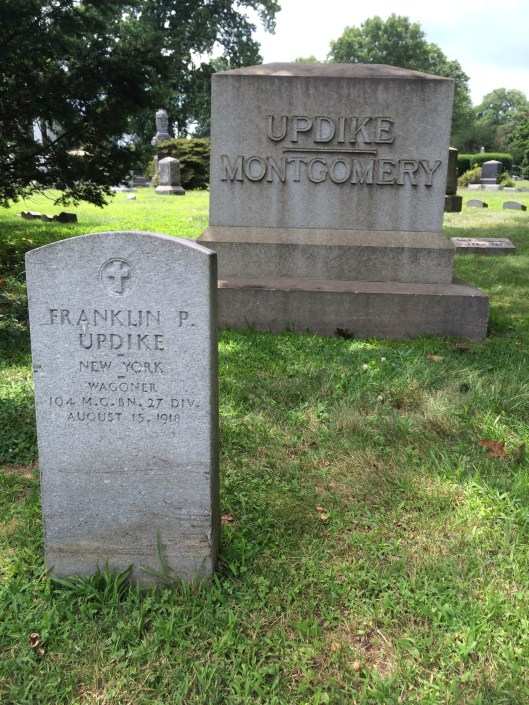I wrote this four years ago and am re-posting it today, the 100th anniversary of the death of Private Franklin P. Updike in the Great War. I was in Green-Wood Cemetery on Sunday when I came across the headstone of Franklin P. Updike. These WW1 headstones are much rarer than the ubiquitous Civil War markers one sees so often in old garden cemeteries. For one thing, there were fewer American deaths in the First World War than there were during the Rebellion. what’s more, a significant portion of doughboys were interred overseas where they were killed.
I was in Green-Wood Cemetery on Sunday when I came across the headstone of Franklin P. Updike. These WW1 headstones are much rarer than the ubiquitous Civil War markers one sees so often in old garden cemeteries. For one thing, there were fewer American deaths in the First World War than there were during the Rebellion. what’s more, a significant portion of doughboys were interred overseas where they were killed.
Updike, I later learned, lived in Brooklyn Heights and enlisted in the Army a month after the U.S. entered the Great War.
Updike is somewhat unusual in that he died during the war and was brought home. Note that the headstone was ordered in April 1942, just as the U.S. was entering the Second World War.
The young private was a wagoner, that is he tended horses and carts. This was a dangerous task; the enemy understood the importance of the enemy’s transport and so did everything to neutralize–kill–it. In his Memoirs George Marshall wrote of the wagoners in his division that at certain periods “the most dangerous duty probably fell to the Quartermaster Sergeants and teamsters who went forward each night.”
The people of St. Ann’s Church held a service for Updike at Thanksgiving 1918. The war had been over for two weeks by this time. This announcement and the one below are from the Brooklyn Daily Eagle.
This afternoon on my lunch break I went to the Heights and took this photo of St. Ann’s as it is today.
The people of Brooklyn did not forget Updike. Alas I don’t believe it still exists today but they named the local American Legion Post after him. This was in January 1924, ninety year ago this year.





